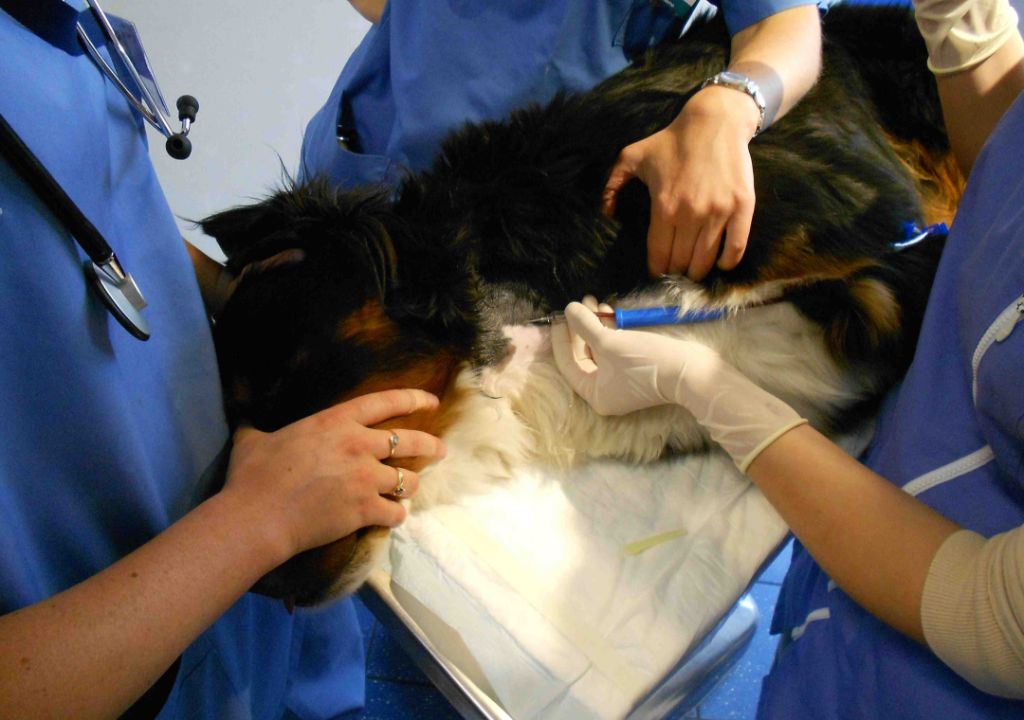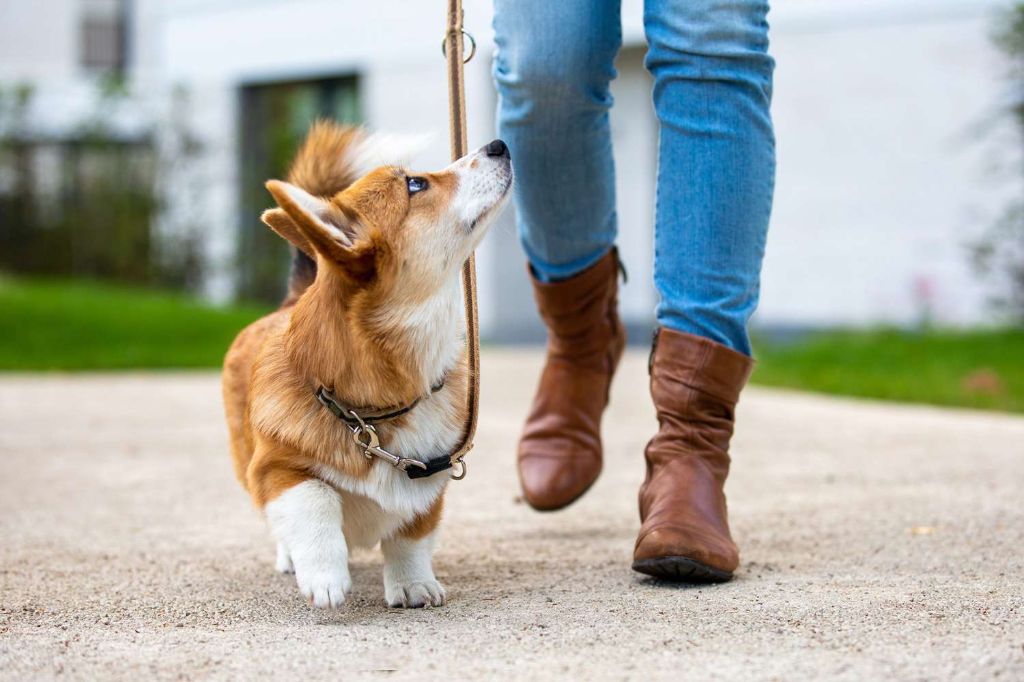Introduction
Blood clotting is an important process in dogs that helps stop bleeding and heal injuries. When a dog gets a cut or wound, the blood clotting process kicks in to form a clot over the injury and stop further blood loss. This helps protect dogs from bleeding out and aids in the healing process.
The clotting process involves platelets and proteins in the blood called clotting factors. When a blood vessel is damaged, platelets rush to the site of injury and stick together to form a plug. Clotting factors then create fibrin threads that act like a net to stabilize the platelet plug. This forms a clot that seals the damaged blood vessel.
If there is a problem with blood clotting in dogs, it can lead to excessive bleeding or abnormal clot formation. Some dogs are born with clotting disorders, while other issues like liver disease, certain medications, or cancers can also impair clotting. That’s why it’s important for dog owners to understand what helps promote normal blood clotting.
Normal Clotting Process
Blood clotting is a complex process that involves platelets, coagulation factors, and von Willebrand factor. When a blood vessel is injured, platelets are activated and aggregate at the site of injury, forming the initial platelet plug. Platelets contain granules that release chemicals that activate additional platelets and stimulate the coagulation cascade.

The coagulation cascade is a series of reactions that form fibrin strands to stabilize the platelet plug. There are two pathways that lead to fibrin formation: the extrinsic pathway which is activated by trauma and involves tissue factor, and the intrinsic pathway which is activated by contact with injured endothelium and involves factors XII, XI, IX, and VIII (Merckvetmanual.com). Both pathways result in the activation of thrombin which converts fibrinogen to fibrin.
Von Willebrand factor is a glycoprotein that facilitates platelet adhesion by binding platelets to collagen in the damaged blood vessel wall and subendothelium. It also serves as a carrier and stabilizer for coagulation factor VIII. A deficiency in von Willebrand factor can lead to impaired clotting.
Clotting Disorders
There are several clotting disorders that can affect blood clotting in dogs:
Von Willebrand disease is a common inherited bleeding disorder in dogs that affects the von Willebrand factor (vWF), a protein that helps platelets stick together (https://vcahospitals.com/know-your-pet/hemophilia-a-b-in-dogs). This disease can lead to problems with blood clotting after surgery or injury.
Hemophilia is caused by a deficiency of clotting factors in the blood, resulting in excessive bleeding (https://vetplanets.com/ng/hemophilia-in-dogs/). The most common type is hemophilia A, which is caused by low levels of clotting factor VIII. Dogs with hemophilia can have spontaneous bleeding episodes.
Thrombocytopenia refers to low levels of platelets, which are involved in initial clot formation (https://www.petmoo.com/dogs/bleeding-disorders-in-dogs/). This condition can result in bruising, bleeding gums, nosebleeds and blood in the urine or stool. It can be caused by certain medications, infections, or immune diseases.
Diagnosing Clotting Disorders
There are several tests veterinarians use to diagnose clotting disorders in dogs:
Blood tests can identify clotting factor deficiencies. Tests like prothrombin time (PT) and activated partial thromboplastin time (aPTT) measure how long it takes blood to clot. Prolonged clotting times indicate a clotting disorder. Specific factor assays can pinpoint which clotting factors are deficient.
Genetic testing can identify gene mutations causing clotting disorders like von Willebrand disease. Breed-specific tests are available for breeds prone to certain disorders.
Platelet counts from complete blood counts reveal thrombocytopenia, a low platelet count. Follow-up platelet function tests assess platelet function and screen for platelet disorders.
Treatment
Treatment for clotting disorders in dogs focuses on addressing the underlying cause and providing supportive care as needed. Some options include:

Transfusions: Dogs with clotting disorders may receive transfusions of whole blood, plasma, or platelets to help replace clotting factors and prevent excessive bleeding. According to Merck Veterinary Manual, “Transfusions of whole blood or plasma may be needed to control bleeding”.
Medications: Drugs that help promote clotting can be administered, such as vitamin K, aminocaproic acid, or tranexamic acid. According to WagWalking, “Medication prescribed will usually involve clotting factors.”
Surgery: Any necessary surgery is done carefully in dogs with clotting disorders to minimize bleeding risks. WagWalking notes, “If surgery needs to be performed, the vet will take steps to ensure minimal blood loss.” Strict hemostasis and cautery are utilized.
Additionally, any underlying issues are addressed. In the case of rodenticide toxicity, the poison must be removed from the body. Other medical conditions are managed accordingly.
Prevention
There are steps owners can take to help prevent blood clotting issues in their dogs:
Avoid giving medications that thin the blood and prevent clotting. Drugs like aspirin, nonsteroidal anti-inflammatory drugs (NSAIDs), and anticoagulant rodenticides can all negatively impact clotting. Unless prescribed by a veterinarian, these drugs should be avoided.
Have screening tests done if a dog is at high risk for clotting disorders. Dogs that have had prior clotting issues, certain breeds prone to clot disorders, or dogs undergoing procedures like orthopedic surgery may benefit from screening tests to evaluate clotting times and factor levels.
Maintaining a healthy body condition score through proper diet and exercise can support normal clotting function. Obesity leads to higher inflammation which interferes with clotting. Regular vet checkups to monitor overall health are also recommended.
Quickly treating any injuries, wounds, or bleeding episodes can prevent further complications. Seeking prompt veterinary care is advised if any abnormal bleeding is observed.
Lastly, have any medications carefully reviewed by a vet before starting them. Certain antibiotics, cancer drugs, vaccines and anesthetics can impact clotting times.
Diet
Eating the right foods can help support healthy blood clotting in dogs.

Some of the best foods to feed dogs to promote clotting contain high amounts of vitamin K. Vitamin K is essential for the synthesis of coagulation proteins that allow blood to clot properly. Foods naturally rich in vitamin K include:
- Leafy greens like kale, spinach, and collard greens
- Broccoli and brussels sprouts
- Asparagus
- Cabbage
- Green beans
- Avocados
Other vitamin K rich foods to incorporate into your dog’s diet include beef or chicken livers, eggs, salmon, sardines, parsley, and pumpkin seeds. It’s recommended to feed dogs needing clotting support several servings of vitamin K foods daily. However, check with your vet on the specific foods and amounts that are right for your dog.
In addition to vitamin K, ensuring your dog eats a balanced diet with adequate protein can support blood clotting. Protein provides amino acids that are used to form clotting factors. Lean meats, fish, eggs, and dairy products are good protein sources. When needed, your vet may recommend supplementing with a protein powder.
While vitamin K helps clotting, there are some foods that can hinder it. It’s best to avoid feeding dogs with clotting issues large amounts of oils, nuts, chia seeds, blueberries, garlic, ginger, licorice, and turmeric as these foods and herbs can interfere with clotting.
Check with your veterinarian for personalized recommendations on the optimal diet and any restrictions for your dog’s clotting needs.
Supplements
Certain supplements can help support blood clotting and prevent excessive bleeding in dogs. Two of the most important are:
Vitamin K
Vitamin K plays an essential role in blood clotting. It is needed for the production of clotting factors that help platelets stick together and form clots. Vitamin K deficiency can lead to prolonged bleeding. Your vet may recommend supplementing with vitamin K, especially if your dog has been diagnosed with a clotting disorder or is prone to bleeding.
Omega-3 Fatty Acids
Omega-3 fatty acids like EPA and DHA found in fish oil have natural blood thinning properties. While too much can hinder clotting, getting the right balance as recommended by your vet can help prevent excessive clotting and thrombosis in dogs prone to blood clots.
Always consult your vet before starting any new supplements, especially given your dog’s unique health status. But in the proper doses, vitamin K and omega-3 fatty acids can provide important support for healthy blood clotting.
Exercise
Maintaining an appropriate activity level for your dog can be an important part of preventing and managing blood clots. In general, regular moderate exercise helps improve cardiovascular health and normal blood flow throughout the body.1 For dogs prone to clotting issues or recovering from a previous clot, exercise should be adjusted based on veterinary guidance.

If a clot has developed, a period of strict rest and restricted activity is usually prescribed to allow the body to start dissolving the clot and prevent further damage. However, once initial treatment is underway, light activity may be incorporated to improve circulation and prevent new clots from developing.2 Low impact exercise like short leash walks can help increase blood flow in the legs and lungs. Swimming and water therapy may also be recommended as gentle activities that engage the muscles and cardiovascular system without taxing injured areas.
Close monitoring of activity levels and any symptoms like limping, breathing issues, or fatigue is necessary. Your veterinarian can advise you on an appropriate exercise plan to optimize recovery. With time and care, many dogs can return to normal activity levels once the clot has fully resolved.
When to See a Vet
It’s important to monitor your dog closely for any signs of clotting disorders and seek veterinary care immediately if you notice anything abnormal. Some key signs that indicate your dog may have an underlying clotting issue include:
- Prolonged bleeding from minor cuts, wounds, surgery sites or venipuncture sites
- Unexplained bruising or purplish spots on the skin
- Bloody urine or stool
- Nosebleeds
- Bleeding gums
- Sudden weakness or collapse
If your dog experiences any uncontrolled bleeding or a significant traumatic injury, rush them to the vet or emergency animal hospital right away. Severe blood loss can quickly become life-threatening. Even if bleeding has stopped, a lack of clotting factors could mean it starts up again. Your vet will provide emergency care to stabilize your dog and determine the underlying cause of the clotting disorder.
It’s also important to get prompt veterinary care if your dog needs any type of surgery or dental work. The vet will need to take special precautions and have clotting factors on hand to prevent excessive hemorrhage during and after the procedure. Don’t try to treat a potential clotting disorder at home using supplements or other methods – the underlying cause needs to be properly diagnosed and addressed by a veterinary professional.